Urban Survival in the Aftermath of a Natural Disaster
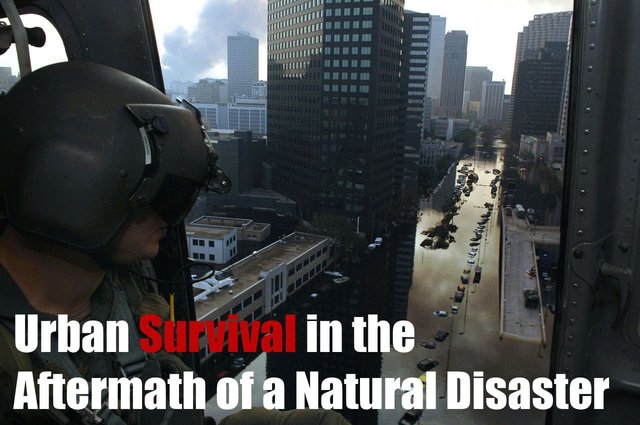
There are many different types of natural disaster all of which have, at some point in recent history, seriously affected a major urban area at some location around the world. Hurricanes, tsunamis and earthquakes appear all too often on news bulletins and they all result in loss of life in almost every case. The horrible truth is that when a disaster of such a magnitude strikes, loss of life is inevitable but the aftermath can be just as deadly to any survivor, unless they have taken the necessary steps to ensure their own survival.
All disasters, natural or otherwise, have one thing in common, they all highlight just how unprepared the vast majority of people are when in comes to living without the things that they take for granted, like clean drinking water, food, electricity, sanitation and safe shelter.
Take hurricane Katrina for example, even after the storm had finished there were still people needlessly dying from dehydration and other related issues. The vast majority of those that died were elderly, but that doesn't mean that their deaths were unavoidable. If they had only acted upon the warnings that were given before the storm hit and had filled up containers with tap water, and put aside food that wouldn't spoil they would have increased their chances of survival exponentially.
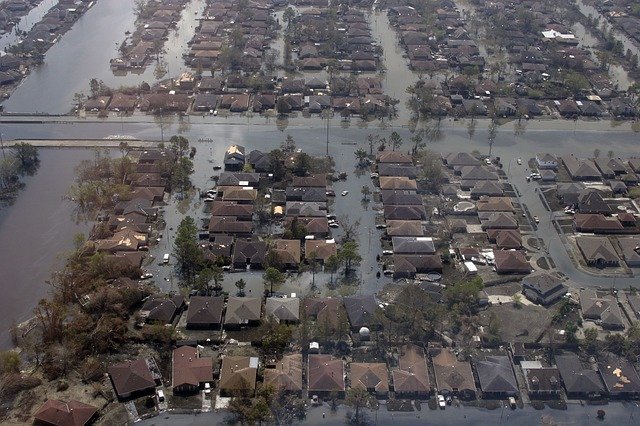
Although, in the case of Katrina, many of those that died were quite frail and would have needed help to prepare for such a natural disaster, help that was unfortunately not always on hand or didn't arrive quick enough.
Katrina was one of the worst natural disasters to hit the US in living memory and one that should have provided a wake up call for many about the importance of being prepared for any crisis.
However, most people will never learn from the past or from mistakes that others have made by not prepping and will continue to put all their trust in the workings and structure of modern society.
Even after being informed about an impending disaster most city dwellers will still naively expect their utilities to continue working as per normal, and should they get cut off, they would thoroughly expect utilities to be back up and running very soon afterwards with minimal disruption to the normal way of life.
Many people also have a misguided notion that help will be quickly with them should they need it, all they'll need to do is call for it! The truth is that help is very unlikely to be available for the first few days after a disaster type scenario, the emergency services will be simply too busy to help everybody.
Unfortunately, when a city is hit by a real SHTF disaster everything that makes life safe and comfortable will be gone. No water, no electricity, no law and order, and no immediate help of any kind.
If your city or town is threatened by a natural disaster and you can't get out to a safe location then basic disaster prepping is the way to go and will greatly improve your chances of survival.
Urban Disaster Prepping – The Basics
First of all let 's start by saying that the information below is as basic as it gets and there is a lot more that can be learned about urban survival, this post is barely scratching the surface. However, regardless of how basic this info is, what you are about to read is still the most essential guide to urban survival and will undoubtedly save your life.
1. Water
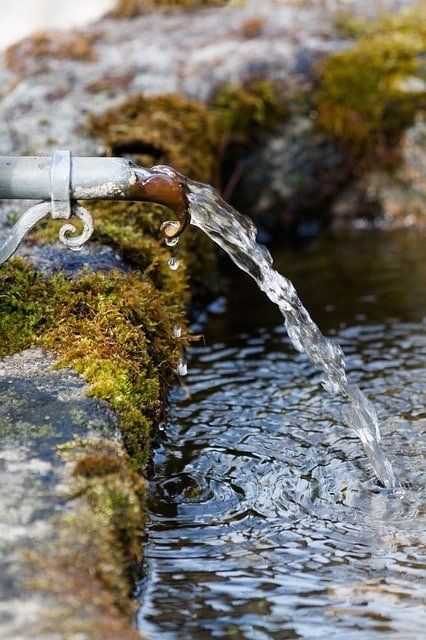
Clean drinking water is essential for your survival and your general well being. The vast majority of people expect clean water to be pumped to our homes continuously, ready to drink whenever needed. These same people will also believe that their supply will be unaffected by a natural disaster and that in the unlikely event their supply should go off it will be reconnected very quickly; unfortunately, the likelihood of this actually being the case is practically nil.
Without water you will quickly dehydrate which can then lead to a number of medical issues ranging in seriousness from dizziness to heart issues, depending upon the level of dehydration.
Your body is losing fluids constantly, through sweating, breathing and the passing of bodily waste; these fluids will need to be replaced which means clean drinking water is absolutely vital. Drinks that contain sugars, alcohol or caffeine are not a good idea and should be avoided because drinking them will only exacerbate the problem of dehydration.
You may have noticed that I have been continually mentioning that your drinking water needs to be clean that’s because after a disaster, particularly flooding, water will often be contaminated with raw sewage and toxic chemicals. Drinking contaminated water is extremely dangerous as there is a high probability of catching a disease or a dangerous infection that will often result in diarrhoea and sickness. Sickness and diarrhoea will rapidly worsen dehydration and will lead ultimately to death, if not treated quickly.
All of the above needn’t concern you if you have a prepped correctly and have a store of clean drinking water. Normal tap water will be fine to store, and it is best to do so in strong plastic containers. You should add a couple of drops of chlorine bleach for each gallon of tap water stored, this will act to disinfect the water and stop any algae or bacterial build up.
You will need to store about a gallon of water per person per day and you will need to store at least three days worth of supply, although storing enough for two weeks would be much more prudent.
If for some reason you cannot access your stored drinking water and you have no option but to drink water that isn’t clean, or you are unsure about, then you have two options; boil the water before using it or, drinking the water through an emergency water filter of some kind.
2. Shelter

Unless you are extremely unlucky, your home will probably still be intact, it might be a bit damp, or a little beaten up, but it should still be habitable and provide you with much needed shelter.
However, if you have lost your home you will need a temporary shelter that is both safe and dry. It will be an absolute necessity especially in extremely cold or hot conditions, when hypothermia and heatstroke respectively can quickly become killers.
Your shelter could be a tent or just a simple tarpaulin, but anything that provides you with protection from the weather is suffice.
You might be in the position to choose the type of shelter you use but, to a large degree, choosing where to locate your shelter will be dictated to you by the type of disaster that has hit your locale.
Flooding will force you to set up shelter in an area of higher ground whereas you will need to look for open ground away from buildings and tall trees if your city has been hit by an earthquake.
3. Clothing
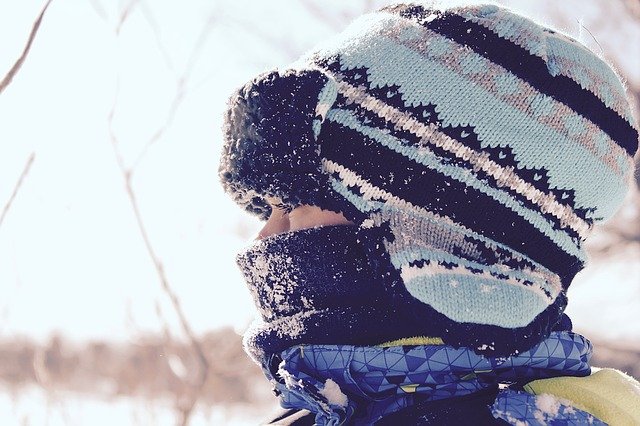
We’ve just covered the importance of having a shelter to protect you from the elements, but your first line of defence will always be your clothing or whatever else you can find and use to wrap around your person.
The correct choice of clothing is more important when combating the wet and the cold. It is better to wear several layers of clothing rather than one thick layer and always try to wear woollen clothing if possible as wool keeps you warm even when wet!
You will lose most of your heat from your head so make sure you have a hat or at least put something on your head even if it is only a thick paper bag.
Your hands and feet will be susceptible to the cold so have some gloves and woollen socks at the ready.
If it is cold there is also a good chance it will be wet too so your clothing needs to be waterproof, or you should at least have a good waterproof coat. If you find yourself without any form of waterproofed clothing, look for a large piece of plastic sheeting. You can then just cut a hole in the middle of it just big enough for your head to fit through and voila, you’ve got an instant wet weather poncho.
In hot weather it is all about staying out the sun. If you do have to venture out then light weight clothing is the order of the day and the lighter the colour the better too as it helps to reflect the sun’s rays, absorbing less heat.
You should try to keep out of the sun during the hottest parts of the day and when you do go out make sure you are always wearing a hat, preferably a wide brimmed one, and try to ensure the back of your neck is covered if you have short hair.
4. Food
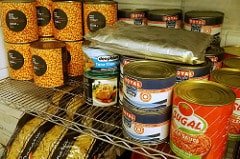
Although your stomach might tell you otherwise, food is not going to be on your list of immediate priorities, well at least for the first few days anyway.
Being hungry is not the greatest feeling in the world but food is something that a healthy adult can survive without for up to three weeks with no adverse affects, unlike water!
That being said, there really is no need to struggle without food. Storing food couldn’t be easier. You can quickly stock up on long lasting foods such as canned meat and vegetables, powdered milk, and pre-wrapped nutrition bars, anything really that has a long shelf life, doesn’t require cooking and doesn’t need to be stored in a refrigerator.
Just remember that if you are storing canned products don’t forget to store a can opener with your stash of cans!
To Conclude…
Surviving in a city in the aftermath of a natural disaster is never going to be a pleasant experience but by ensuring you have covered the basics for survival as outlined above you will be massively increasing your chances of getting through it unscathed.
Author Bio
Danny Major is is the owner of Alpha Survivalist a relatively new website about survival and emergency preparedness. He was formerly a soldier in HM Armed Forces many moons ago, apparently when the colour of the uniform was red according to my kids! https://www.surviveuk.com/survival-blog/urban-survival-in-the-aftermath-of-a-natural-disaster/
Congratulations @surviveuk! You have completed the following achievement on the Steem blockchain and have been rewarded with new badge(s) :
Click here to view your Board of Honor
If you no longer want to receive notifications, reply to this comment with the word
STOPDo not miss the last post from @steemitboard:
Congratulations @surviveuk! You have completed the following achievement on the Steem blockchain and have been rewarded with new badge(s) :
Click here to view your Board of Honor
If you no longer want to receive notifications, reply to this comment with the word
STOPDo not miss the last post from @steemitboard: